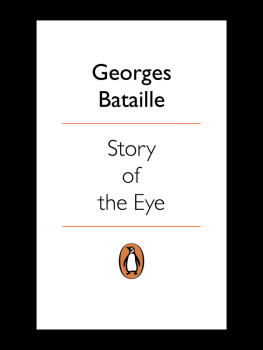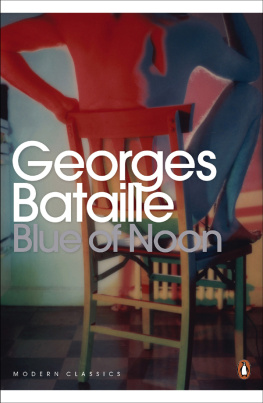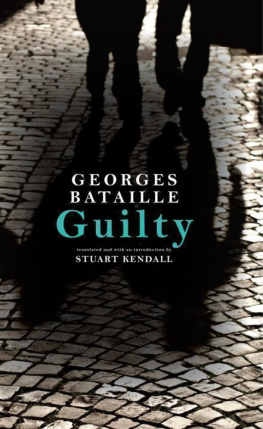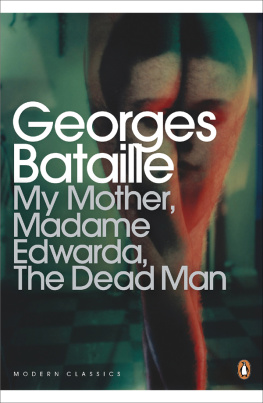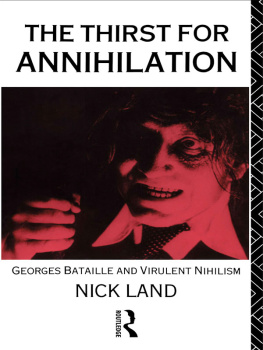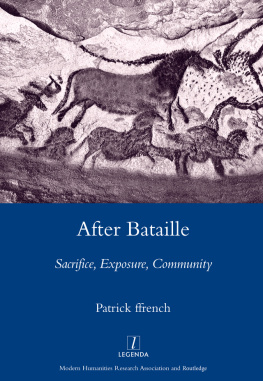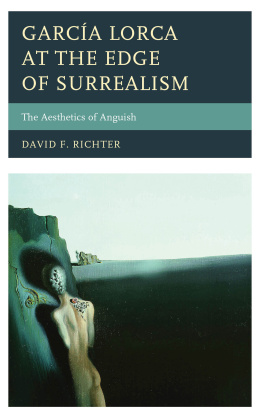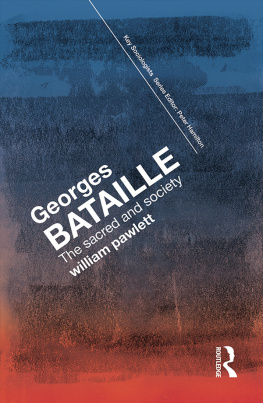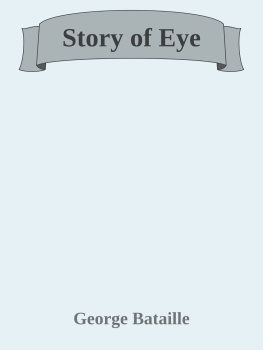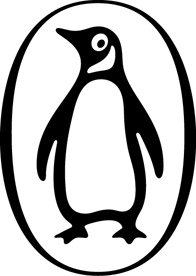Contents
Georges Bataille
STORY OF THE EYE
By Lord Auch
Translated by Joachim Neugroschal
With Essays by Susan Sontag and Roland Barthes
PENGUIN BOOKS
Story of the Eye
Georges Bataille, French essayist and novelist, was born in 1897. He was converted to Catholicism, then to Marxism and was interested in psychoanalysis and mysticism. As curator of the municipal library in Orlans, he led a relatively simple life, although he became involved, usually on the fringes, with the Surrealist movement. He founded the literary review Critique in 1946, which he edited until his death in 1962, and was also a founder of the review Documents, which published many of the leading Surrealist writers.
His writing is a mixture of poetry and philosophy, fantasy and history. It follows the mazes of an exceedingly rich and varied thought, of which the centre point is defined in LExprience intrieure (1943), part of Summa A-theologica. His first novel, Story of the Eye, was written under the pseudonym of Lord Auch. Batailles other works include the novels Blue of Noon and My Mother, and the essays Eroticism and Literature and Evil.
Susan Sontag is one of Americas best-known and most admired writers. Her books include the novels, The Benefactor, Death Kit and The Volcano Lover, a collection of stories, I, etcetera; a story, The Way We Live Now; and a play, Alice in Bed. Among her non-fiction books are collections of essays, Against Interpretation, Styles of Radical Will, On Photography, which won the National Book Critics Circle Award, and Under the Sign of Saturn. She has also written and directed feature length films and staged plays in the United States and Europe.
Roland Barthes was born in 1915 and studied French literature and Classics at the University of Paris. After teaching French at universities in Romania and Egypt, he joined the Centre National de la Recherche Scientifique, where he devoted himself to research in sociology and lexicology. He later lectured at the cole des Hautes tudes on the sociology of signs, symbols and collective representations. Roland Barthes died in 1980. His publications include On Racine, Writing Degree Zero, Elements of Semiology, Mythologies, S/Z, The Pleasure of Text and Sade/Fourier/Loyola.
THE BEGINNING
Let the conversation begin...
Follow the Penguin Twitter.com@penguinukbooks
Keep up-to-date with all our stories YouTube.com/penguinbooks
Pin Penguin Books to your Pinterest
Like Penguin Books on Facebook.com/penguinbooks
Find out more about the author and
discover more stories like this at Penguin.co.uk
PENGUIN BOOKS
Published by the Penguin Group
Penguin Books Ltd, 80 Strand, London WC2R 0RL , England
Penguin Group (USA) Inc., 375 Hudson Street, New York, New York 10014, USA
Penguin Group (Canada), 90 Eglinton Avenue East, Suite 700, Toronto, Ontario, Canada M4P 2Y3 (a division of Pearson Penguin Canada Inc.)
Penguin Ireland, 25 St Stephens Green, Dublin 2, Ireland (a division of Penguin Books Ltd)
Penguin Group (Australia), 707 Collins Street, Melbourne, Victoria 3008, Australia (a division of Pearson Australia Group Pty Ltd)
Penguin Books India Pvt Ltd, 11 Community Centre, Panchsheel Park, New Delhi 110 017, India
Penguin Group (NZ), 67 Apollo Drive, Rosedale, Auckland 0632, New Zealand (a division of Pearson New Zealand Ltd)
Penguin Books (South Africa) (Pty) Ltd, Block D, Rosebank Office Park, 181 Jan Smuts Avenue, Parktown North, Gauteng 2193, South Africa
Penguin Books Ltd, Registered Offices: 80 Strand, London WC2R 0RL , England
www.penguin.com
Story of the Eye first published in France as Histoire de lOeil 1928
The Pornographic Imagination first published by Martin Seeker & Warburg Ltd in Styles of Radical Will 1967
The Metaphor of the Eye first published in France as
Le Mtaphore de lOeil in Critique 1963
First published in this edition by Marion Boyars Publishers Ltd 1979
Published in Penguin Books 1982
Story of the Eye copyright J.-J. Pauvert, 1967
This translation copyright Urizen Books, 1977
The Pornographic Imagination copyright Susan Sontag, 1967
The Metaphor of the Eye copyright Roland Barthes, 1963
This translation copyright Marion Boyars Publishers Ltd, 1979
All rights reserved.
ISBN: 978-0-141-91367-4
Publishers Note
The shortness of this important erotic classic now translated into English for the first time fifty years after its original French publication enables us to include in this volume two essays that deal with the genre and style of Story of the Eye: Susan Sontags essay on aspects of the literature of sex, The Pornographic Imagination (from Styles of Radical Will, 1967) explores a literary form that is, despite its manifold representation in English and Continental writing, seldom accepted in our puritan Anglo-American canon. Roland Barthes The Metaphor of the Eye (from the magazine Critique, 1963) discusses in depth the language of Story of the Eye, a major example of French Surrealist writing, a movement which is at last beginning to receive serious critical attention in England and the United States.
M.B.
Translators Note
Story of the Eye was Georges Batailles first novel, and there were four editions, the first in 1928. The other three, known as the new version, came out in 1940, 1941, and 1967. The new version differs so thoroughly in all details from the first edition that one can justifiably speak of two distinct books. Indeed, the Gallimard publication of the complete works includes both versions in its opening volume.
The English translation is based on the original version, but the Outline for a Sequel comes from the fourth edition.
Of all the editions, only the final, posthumous one bore the authors name. The other three were credited to Lord Auch, a pseudonym explained in Batailles short prose piece Le Petit (1943). (The relevant part is included at the end of this section.)
J.N.
1. The Cats Eye
I grew up very much alone, and as far back as I recall I was frightened of anything sexual. I was nearly sixteen when I met Simone, a girl my own age, at the beach in X. Our families being distantly related, we quickly grew intimate. Three days after our first meeting, Simone and I were alone in her villa. She was wearing a black pinafore with a starched white collar. I began to realize that she shared my anxiety at seeing her, and I felt even more anxious that day because I hoped she would be stark naked under the pinafore.

